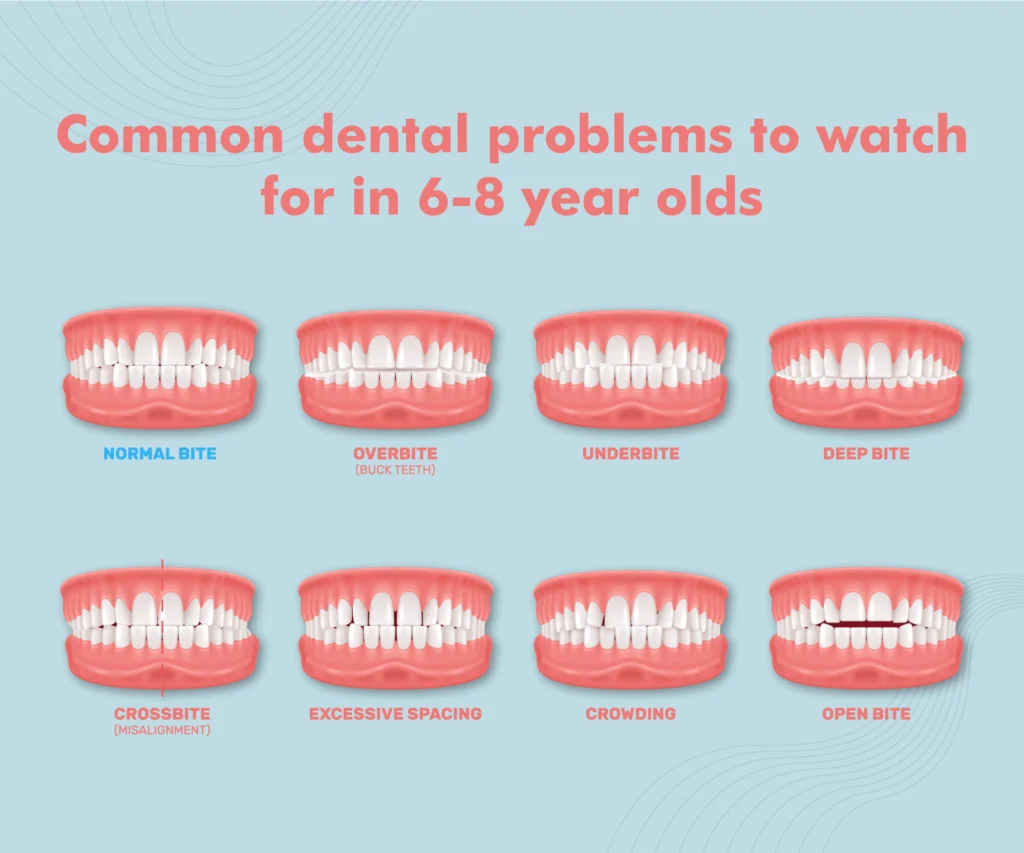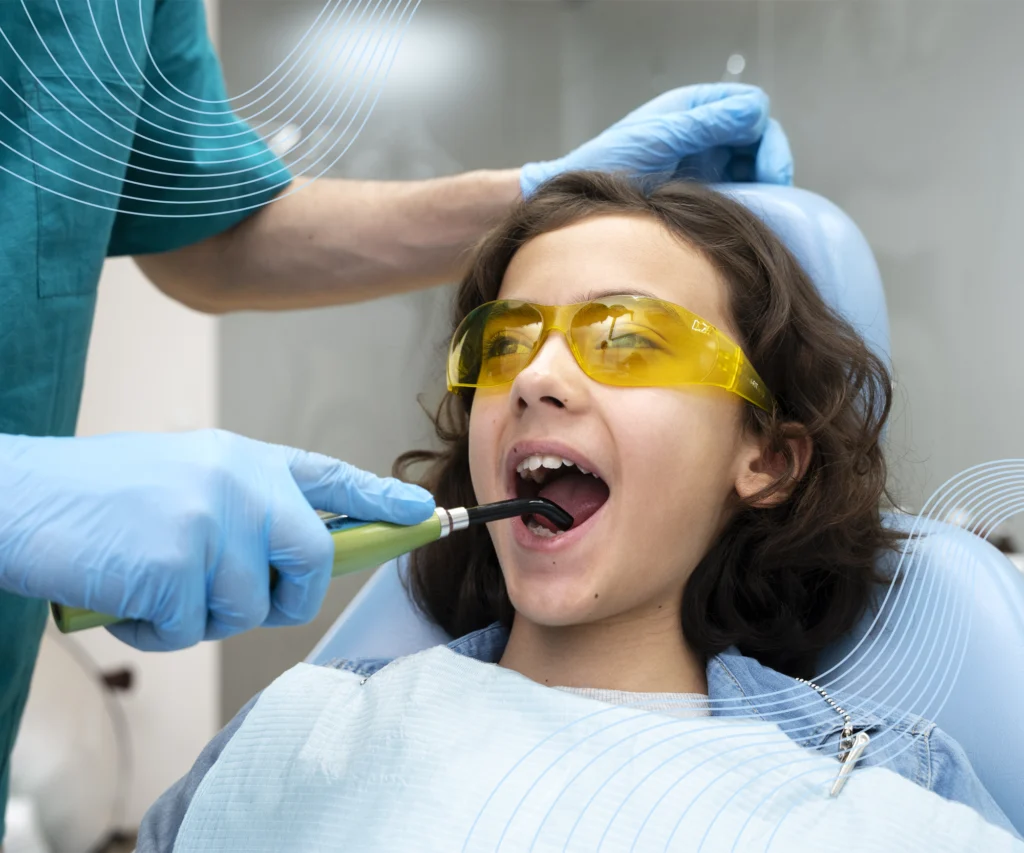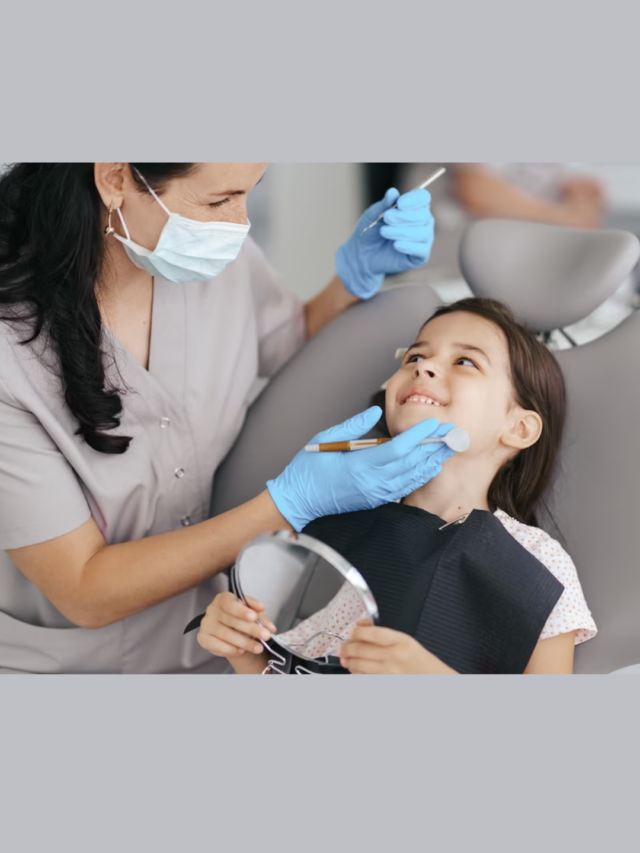Childhood is full of milestones, from losing the first baby tooth to the first day of adult teeth appearing. As a new mom, you probably document every little detail to cherish those later. But are you missing something more important? As a parent, you determine whether your child moves through the teeth development phases in a healthy, orderly manner. You may schedule the first orthodontic appointment if you or your primary dentist have identified a potential problem or if you simply want to be proactive.
Before you plan the first orthodontic appointment
What crosses your mind when you think of your child’s dental health and well-being? Of course, chances are high that you will reach out to your primary dentist. So, why is this article about orthodontists in particular? Why does your child even need such specialised care at an early age?
This confusion arises because only some parents are fully aware of an orthodontist’s role. With the mention of an orthodontist, you probably think of getting braces done. But that is not all.
An orthodontist is a dental specialist who focuses on diagnosing, preventing, and treating dental and facial irregularities in children, teenagers, and adults. Early orthodontic treatment helps to promote healthy dental development and improve the overall jaw and teeth alignment and facial aesthetic asymmetry. The sooner an expert evaluates your child, the higher the chances of preventing future complications. Now the question arises, how soon? Let’s get to answering that, along with other frequently asked questions, right away.
What is the appropriate age to take your child for their first orthodontic appointment?
While most people understand that it is never too late to begin orthodontic treatment, many are unaware of the importance of early evaluation! The American Association of Orthodontists agrees that children should have an initial assessment by the age of seven.

Why is early orthodontic treatment required?
Do early visits automatically imply appliances or braces for children? Not at all! The first orthodontist appointment can benefit 15% to 20% of children at this age. Still, in most cases, appliances are not necessary.
All children develop differently, but adult molars usually appear around six years. At this point, an orthodontist can assess the teeth’s basic alignment, balance, and structure. Plus, the evaluation also helps to determine whether there is enough room in the mouth for all permanent teeth. If there is not, the expert will devise a plan of action.
What are the added advantages of early orthodontic treatment?
Early orthodontic evaluation, also known as interceptive orthodontic treatment, can benefit children in various ways. Please note that early evaluation does not always lead to early treatment. Consider this as a method of monitoring your child’s growth pattern until it is time to begin any treatment. The more prepared you are, the higher the chances of the treatment plan achieving the best results in the shortest time.
Five major advantages of early orthodontic treatment
- Putting a stop to developing bite problems
Early treatment can help prevent more serious problems (e.g. crossbite, underbite, severe crowding when adult teeth appear) from developing. Also, it is less invasive and shorter in duration than treatment at a later age.
- Making space for permanent teeth
Early treatment can create space for incoming permanent teeth, reducing the need for extractions or other more invasive procedures.
- Improving oral hygiene
Crowded teeth are harder to clean, leading to tooth decay and gum disease. Early treatment can improve oral hygiene and reduce the risk of these problems.
- Reducing the risk of trauma to protruded front teeth
An early evaluation also can help position front teeth to reduce the risk of trauma in the event of a fall or injury.
- Problems with chewing, biting, and speaking clearly
An orthodontist can help with problems related to chewing, biting, and speaking by realigning the teeth and jaws through braces, clear aligners, or other orthodontic devices. This can promote proper jaw function and improve chewing, biting, and speaking abilities. Early orthodontic treatment can intercept when there is any deviation from its normal course, along with promoting the growth of the jawbone, to achieve the desired result.
Overall, the first orthodontist appointment can set a foundation for a lifetime of good oral health for your child. So, are you ready to take the first step?
Schedule your child’s first orthodontic appointment
Seven years is an excellent time to assess any developing bite problems and monitor jaw growth and tooth eruption. To schedule your child’s first visit to an orthodontist, you can:
- Ask for recommendations from your family dentist or paediatrician.
- Look up orthodontists in your area and read online reviews from past patients.
- Call the clinic and ask about their availability for a consultation.
- Provide the orthodontist with your child’s medical and dental history and relevant information about your concerns.
- Look for a clinic with specialized X-ray machines for OPG, and Cephalogram. Otherwise, you will have to do it outside, which could be a hassle.
It is essential to choose an experienced orthodontist with a good reputation. In addition, they should make your child feel comfortable and at ease during the visits.
Be prepared for the possible treatments
So, what happens during the first orthodontist appointment? If there are no concerns, the practitioner might ask for a subsequent evaluation every six months to evaluate the eruption status of permanent teeth and intervene as and when required. But what happens between the ages of 6 to 12?
During the first orthodontic appointment, a check-up will be followed by taking records like impressions, photos, and X-rays to evaluate the case better. This stage is known as mixed dentition, which refers to the period when both primary (baby) and permanent teeth are present in the mouth. This stage typically occurs when the first permanent molars, incisors, and canines start to emerge and replace primary teeth. The mixed dentition period is a critical time for an orthodontic evaluation and treatment (if necessary) to address any developing problems and ensure a healthy bite and smile in the future.
Please note that your child might not get dental braces during this growth phase. The expert will opt for different kinds of removable appliances instead. The sooner you can prevent future hassles, the more you can avoid the chances of tooth extraction or significant surgery in the future. Plus, interceptive orthodontic programs are also more straightforward and cheaper.
Follow the orthodontist’s instructions
Following the orthodontist’s instructions is essential to ensure the best possible outcomes and minimise potential complications. Some of the standard instructions that an orthodontist might give include the following:
⦁ Brush and floss regularly:
Keeping your child’s teeth clean is essential for good oral health, especially when undergoing orthodontic treatment.
⦁ Avoid hard and sticky foods:
Certain foods can damage functional orthodontic appliances, so avoiding them is crucial.
⦁ Wear orthodontic appliances as directed:
The orthodontist will give specific instructions on when and how long to wear the appliances.
⦁ Follow-up appointments:
Regular appointments are necessary for monitoring progress and making any necessary adjustments. Generally, an expert recommends visiting once a month.
⦁ Report any problems:
Suppose your child is experiencing any discomfort or damage to the orthodontic appliances. In that case, it is essential to report it to the orthodontist immediately. By following the orthodontist’s instructions, you can ensure a successful treatment and a beautiful, healthy smile.
Be patient and supportive
Orthodontic evaluation and treatment can be a long process. So, parents need to be patient and supportive of their children during this time. Preparing your children for what may happen during the first orthodontic appointment is helpful. But make sure you do not scare them. Rather, educate them properly so that they become more cooperative with the doctor.
Let your child know that you are proud of their efforts and that their endurance and discipline will pay off in the end. Moreover, be there for your child if they need help or have any concerns about their treatment. Your child may experience discomfort or soreness during the first orthodontic treatment, so it is important to be understanding and provide comfort. By being patient and supportive, you can help your child stay positive and motivated starting from the first orthodontist appointment and ensure a successful outcome eventually.


